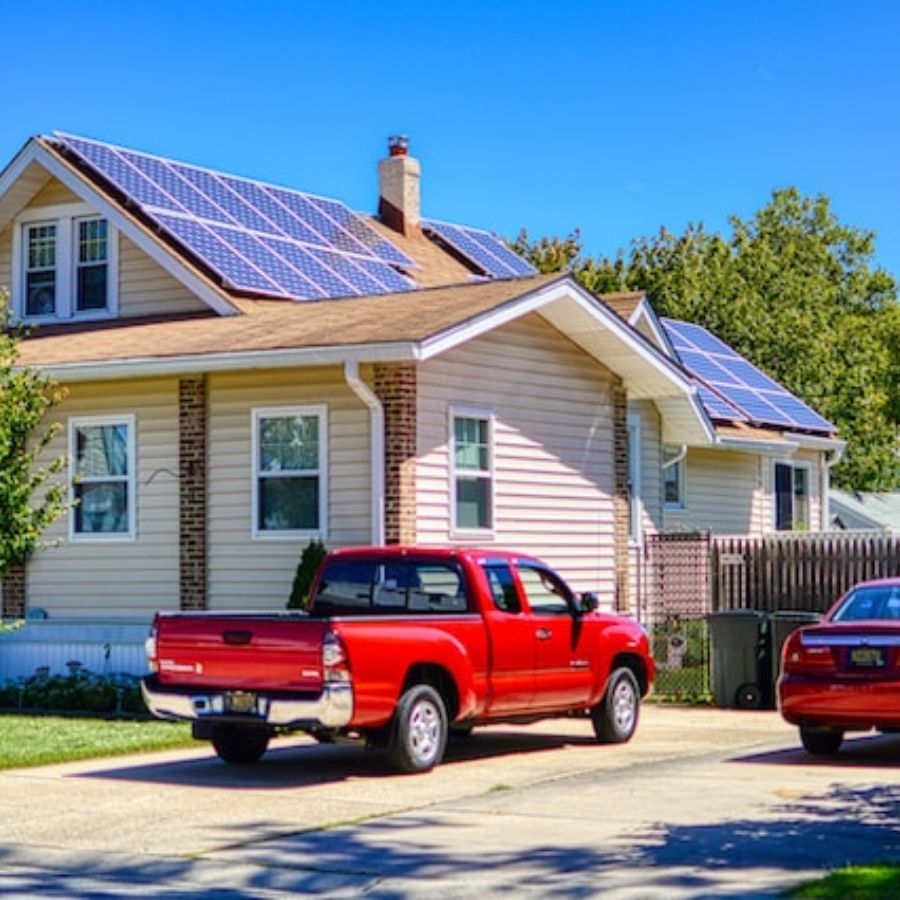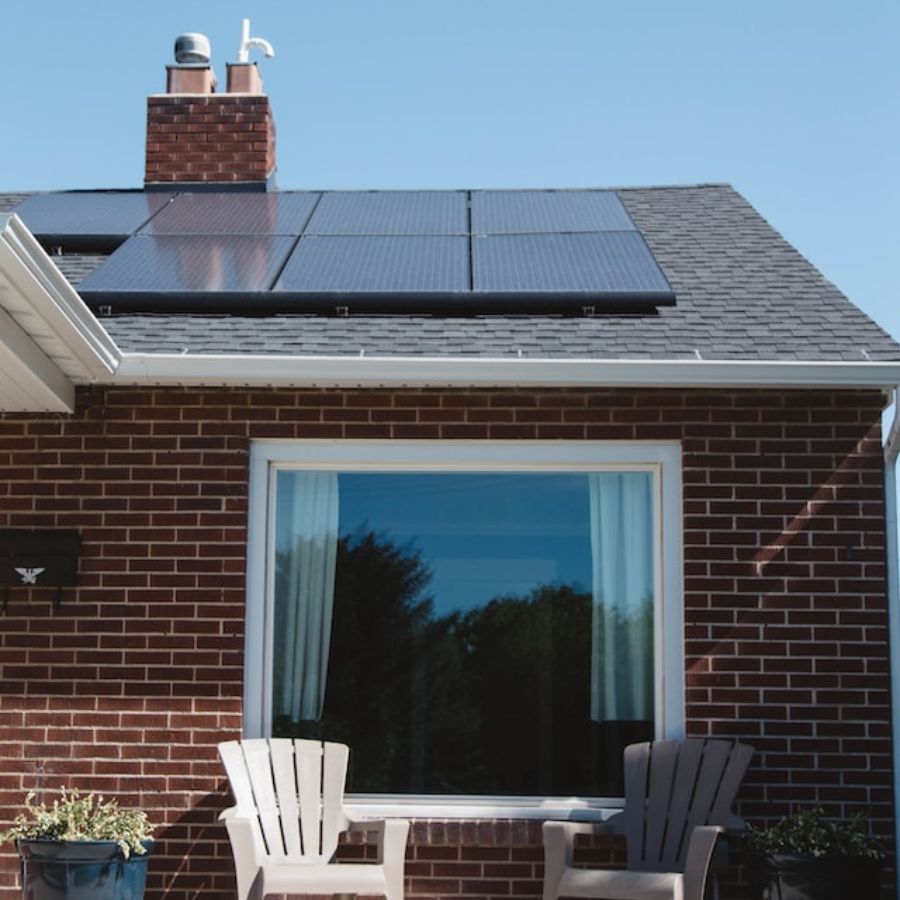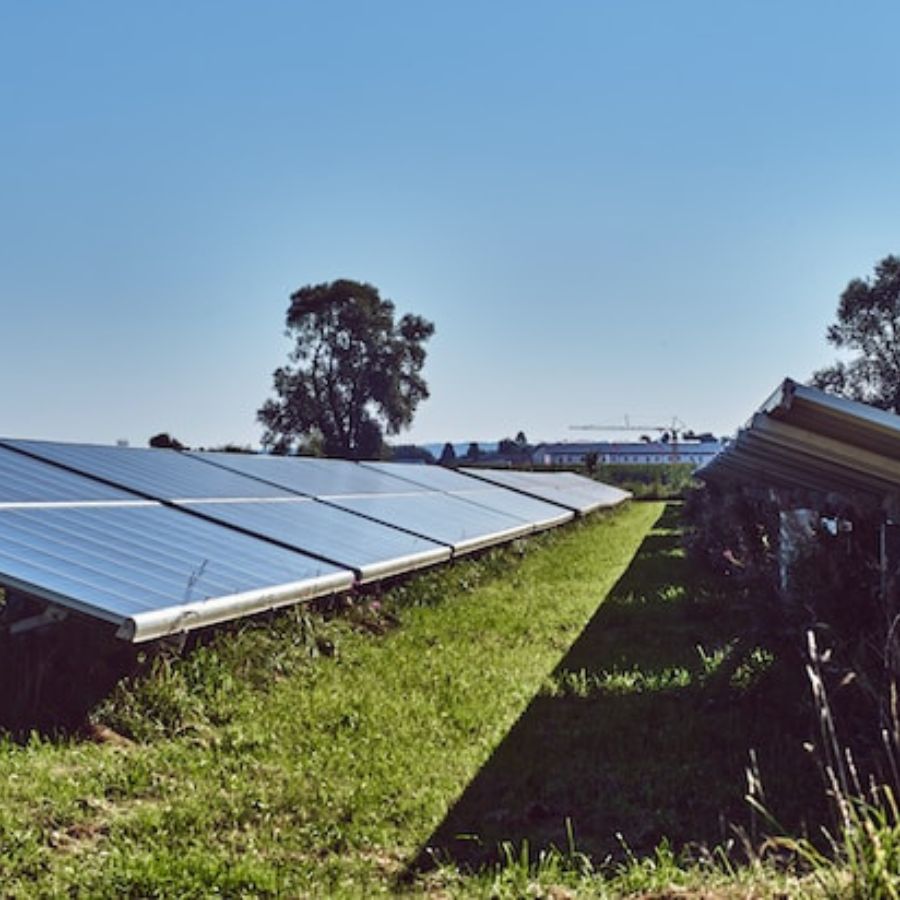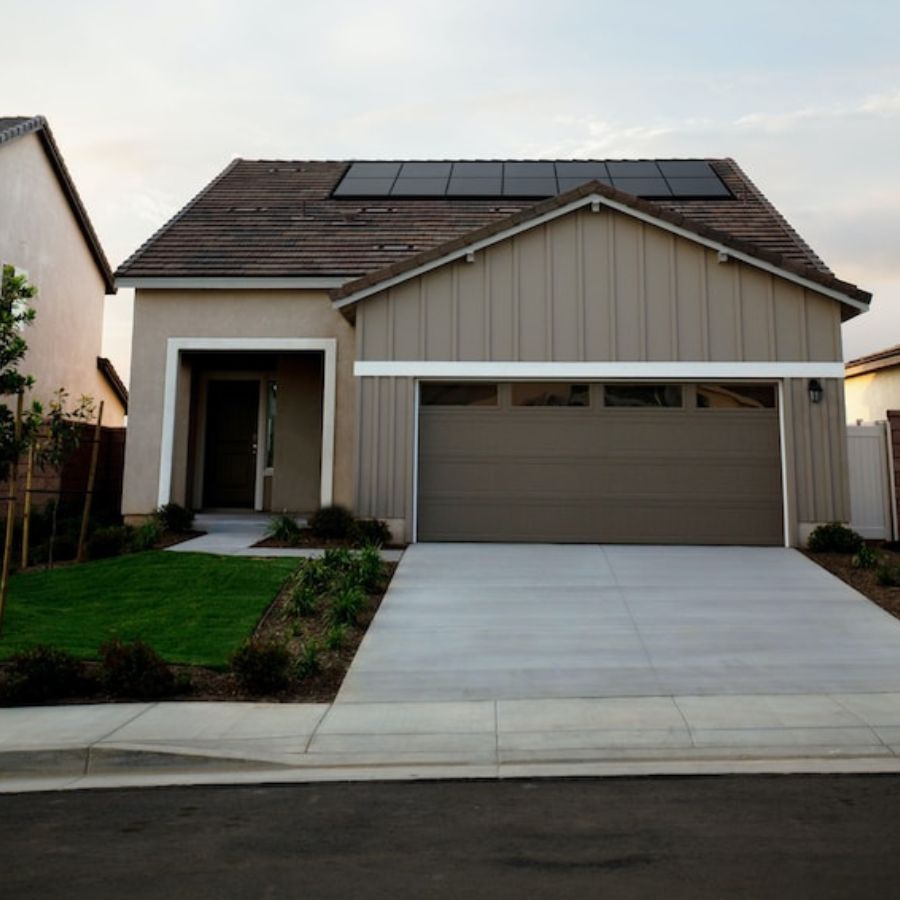Solar energy plays a major role and has gained significant popularity in recent years as a sustainable and cost-effective alternative to traditional fossil fuel-based electricity generation.
One key factor many homeowners and businesses consider before installing solar panels is the payback period. That is the time it takes for the savings on electricity bills to cover the initial investment in the solar panel system.
In Canada, the payback period for solar panels varies depending on several factors, including location, electricity costs, solar incentives, and installation costs.
This article will explore the solar panel payback period, the reasonable payback period, and how to calculate it.
What is the Solar Panel Payback Period?

The solar panel payback period refers to the time it takes for solar panels to generate enough energy savings to recoup the initial investment cost.
In other words, it is the duration required for solar panels to pay for themselves through reduced electricity expenses.
Understanding the solar panel payback period is crucial for individuals considering solar installations as it helps determine the financial viability and return on investment.
Homeowners and businesses can estimate the payback period and make informed decisions regarding solar power systems. They do it by evaluating installation costs, energy production, electricity rates, and available incentives.
Calculating Your Solar Energy Payback Period
If you want to know how long it takes for solar panels to pay for themselves, keep reading. The payback period for your solar power system is a crucial step in understanding the financial benefits of solar energy.
By evaluating the initial investment cost and the potential savings on your electricity bills, you can determine how long it will take for your solar panels to pay for themselves.
Here’s a step-by-step guide on how to calculate your solar energy payback period:
Determine the Total Cost of Your Solar Panel System
The first step is to gather all the relevant information regarding the cost of your solar panel installation.
It includes the expenses of purchasing the solar panels, installation costs, permits, and additional fees.
Be sure to consider both the material and labor costs when calculating the total system cost.
Estimate Your Monthly Electric Bill Savings
It would be best to determine how much electricity your solar panels will generate to calculate your electric bill savings.
That can be estimated based on factors such as the size and efficiency of your solar system and the average daily sunlight in your area. It can also depend on any shading or obstructions affecting solar panel performance.
You can consult with a solar installer or use online solar calculators to get an accurate estimate of your energy production.
Once you estimate your energy production, you can calculate your electric bill savings.
You multiply the electricity generated by your solar panels by the cost of electricity per kilowatt-hour (kWh) in your area.
The result is the money you would save on your monthly electricity bill.
Calculate the Payback Period
One can calculate the payback period by dividing the total cost of your solar system by your electric bill savings.
The formula for calculating the payback period is as follows:
Payback period = Total cost of the solar system / Monthly electric bill savings
For example, your total system cost is $20,000, and your estimated monthly electric bill savings is $200. Using the formula, your payback period would be:
Payback period = $20,000 / $200 = 100 months
In this case, the payback period would be approximately 8.3 years (100 months divided by 12 months per year). Therefore, your solar panels would take around 8.3 years to generate enough savings to recoup the initial investment cost.
It’s important to note that the payback period is an estimate and may vary based on changes in electricity rates, energy consumption patterns, and system performance over time.
Additionally, incentives such as tax credits and rebates can further reduce the payback period.
Additional Factors That Impact Solar Power Payback Period

Understanding these factors is essential for accurately estimating the payback period of your solar energy system.
Let’s explore the key factors that impact your solar energy payback period.
Your Home’s Energy Consumption
The electricity your home consumes plays a significant role in the payback period. Homes with higher energy consumption tend to benefit more from solar panels, which can generate substantial savings on monthly electricity bills.
Review your past electricity bills or consult a solar energy auditor to estimate your energy consumption. By understanding your solar energy needs, you can better assess the impact of solar panels on your payback period.
The Solar System’s Output
Factors such as the size and efficiency of the solar panels, the tilt and orientation of the panels, shading, and the geographical location of your property influence the energy production of your solar energy system.
A more extensive and efficient system can generate more electricity, leading to more significant monthly savings and a shorter payback period.
Consult with solar installers to determine the optimal system size and configuration for your solar energy needs.
Change in Electricity Costs Over the Years
Electricity costs fluctuate over time due to inflation, changes in energy regulations, and shifts in the energy market.
When calculating the payback period, it’s essential to consider these potential changes in electricity costs. Higher electricity rates can result in faster savings accumulation and a shorter payback period, while lower rates may extend the time needed to recoup the initial investment.
The Tax Break Factor
Government incentives and tax breaks play a crucial role in the payback period of solar energy systems. For instance, the federal solar tax credit allows homeowners to deduct a percentage of their total solar system cost from their federal taxes.
State and local governments may offer additional incentives such as rebates or solar renewable energy certificates (SRECs). These incentives reduce the net cost of installing PV panels, accelerating the payback period.
Considering these factors when calculating your solar energy payback period will provide a more accurate estimation of the time it will take for your solar panels to pay for themselves.
It’s essential to consult with reputable solar installers who can assess your specific circumstances and provide detailed calculations based on your energy consumption, local regulations, and available incentives.
By choosing high-quality solar panels, understanding your energy needs, and considering potential changes in electricity expenses, you can make informed decisions and maximize the financial benefits of your solar power system.
Furthermore, taking advantage of government incentives and tax breaks can significantly shorten the payback period, making solar energy an attractive long-term investment.
Ultimately, investing in solar panels contributes to environmental sustainability and offers substantial financial savings in the form of reduced energy bills and increased property value.
How to Know If Your Payback Period Is Reasonable?
An excellent solar payback period is subjective and can vary depending on individual circumstances and financial goals. However, general benchmarks can help determine what is favorable regarding solar payback periods.
Typically, a payback period ranging from 5 to 7 years is considered suitable for residential PV panel installations.
It means that the energy savings from solar panels will offset the initial investment cost within that timeframe.
A shorter payback period indicates a more rapid investment return and excellent long-term financial benefits.
Determining whether your payback period is reasonable requires assessing several factors and considering your financial goals and circumstances.
Here are some key considerations to help you evaluate the reasonableness of your solar panel payback period:
Regional and Industry Standards
Start by researching regional and industry standards for solar PV payback periods. These benchmarks can provide valuable insights into what is considered a reasonable payback period in your area.
Local electricity rates, available incentives, and installation costs can influence these standards.
Comparing your payback period to regional and industry averages can give you a sense of whether your situation aligns with common expectations.
Financial Goals
Consider your financial goals and expectations. For example, are you primarily seeking to reduce your monthly energy bills, generate long-term savings, or make an environmentally conscious investment?
Your priorities will influence your perception of what constitutes a reasonable payback period. For example, if your main objective is immediate financial returns, you may have a shorter threshold for what you consider appropriate.
However, if you prioritize long-term savings and the environmental benefits of renewable energy, you may be more willing to accept a more extended payback period.
Available Incentives and Tax Breaks
Consider the available solar incentives and tax breaks that can significantly reduce your upfront costs.
Federal, state, and local programs offer solar panel installation incentives. These incentives can include tax credits, rebates, grants, or solar renewable energy certificates (SRECs).
By factoring in the benefits of these incentives, you can have a more accurate assessment of the reasonableness of your solar payback period.
Energy Consumption and Savings
Evaluate your energy consumption patterns and estimate the potential savings from your solar panel system.
Consider factors such as the size and efficiency of your solar panels and any adjustments you can make to improve energy efficiency in your home.
Maximizing your energy savings can shorten the solar panel payback period. Additionally, consider rising electricity costs over time and how that may affect your savings and the solar panels’ payback period.
Long-Term Investment Perspective
Consider your solar panel system as a long-term investment. Solar panels typically have a lifespan of 25 to 30 years, during which they continue to generate electricity and savings.
Assess the potential long-term benefits beyond the payback period, such as reduced reliance on fossil fuels, increased property value, and protection against rising electricity costs.
A broader view of the long-term advantages can help determine whether your payback period is reasonable.
Risk Tolerance and Return on Investment
Evaluate your risk tolerance and expected return on investment. For example, solar panels are generally considered a low-risk investment with reliable returns.
However, your assessment of the reasonableness of the solar payback period may depend on your risk tolerance and the overall return you expect from your investment.
Consider factors such as the stability of your local utility rates, the potential for future energy savings, and the environmental benefits of solar energy.
By carefully evaluating these factors, you can make an informed judgment about whether your solar payback period aligns with your expectations and objectives.
Remember to consult solar industry professionals or financial advisors for personalized advice based on your circumstances.
What are the Challenges of the Solar Panel Payback Period in Canada?

Solar energy has gained significant traction in Canada as an environmentally friendly and sustainable alternative to traditional energy sources. However, despite its numerous benefits, several challenges can affect the solar payback period in Canada.
Understanding these challenges is crucial for individuals considering solar panel installations. Let’s explore some of the critical challenges that impact the payback period of solar panels in Canada.
High Upfront Installation Costs
One of the primary challenges of Canada’s solar panel payback period is the high upfront installation costs. The initial investment required for purchasing and installing solar panels can be substantial, including the cost of solar panels, inverters, mounting equipment, permits, and installation labor.
While the prices of solar panels have decreased over the years, the upfront costs can still be a barrier for many homeowners.
Climate and Weather Conditions
Canada’s climate and weather conditions present unique challenges for solar panel installations. For example, the country experiences harsh winters with limited daylight hours, affecting solar panels’ energy production and efficiency.
Snow accumulation on panels can reduce their ability to generate electricity. Moreover, shorter daylight hours during the winter months can impact the overall energy production and, subsequently, the payback period.
Seasonal Variations in Energy Production
Solar panels in Canada experience significant variations in energy production due to seasonal changes. For example, the long summer days increase sunlight exposure and higher energy production. However, shorter days and lower sun angles reduce energy production during winter. This fluctuation in energy production affects the overall savings and payback period of solar panels in Canada.
Limited Net Metering Policies
Net metering allows solar panel owners to sell excess energy to the grid, offsetting their electricity costs. However, the availability and terms of net metering policies can vary across different provinces in Canada.
Some provinces have limitations on the size of the system eligible for net metering or impose caps on the amount of excess energy that can be credited. These limitations can impact solar panel installations’ financial benefits and payback period.
Regulatory and Permitting Challenges
Regulatory and permitting challenges can also affect the payback period of solar panels in Canada. Each province has its own set of regulations and licensing requirements for PV panel installations. These processes can be time-consuming and may involve additional costs. As a result, delays in obtaining permits or navigating regulatory complexities can prolong the payback period and impact the overall financial viability of PV panel installations.
Financing Options and Incentives
Access to affordable financing options and incentives is crucial for reducing the payback period of solar panels. While various federal and provincial incentives are available in Canada, the availability and terms can vary. For example, the federal government offers a solar investment tax credit and grants for renewable energy projects, but the availability and eligibility criteria may change over time. Additionally, financing options such as solar loans or leasing programs can help homeowners manage the upfront costs. Again, however, the availability of these options may vary depending on the region.
Lack of Public Awareness
Limited public awareness and understanding of solar energy and its benefits can pose challenges for the payback period of solar panels in Canada. Many homeowners may need to know the long-term financial benefits, environmental advantages, and government incentives associated with PV panel installations. This lack of awareness can discourage potential adopters and prolong the payback period.
Addressing these challenges requires a comprehensive approach that involves government support, policy reforms, public education, and advancements in solar technology. However, these challenges can mitigate as the solar industry continues to evolve and innovate. It also makes PV panel installations more accessible and financially viable for homeowners in Canada.
Final Words
In conclusion, the payback period for PV panels in Canada can vary depending on factors such as location, electricity expenses, and available incentives. A reasonable payback period is typically around 5 to 10 years. However, it’s crucial to consider PV panels as a long-term investment that offers financial savings, environmental benefits, and energy independence.
The solar industry is growing, providing job opportunities and economic growth. Whether through savings on electricity bills, reducing greenhouse gas emissions, or promoting energy resilience, PV panels are a wise choice. So, when considering how many solar panels to install or exploring solar loans, remember solar electricity’s long-term advantages and positive impact.


Leave a Reply